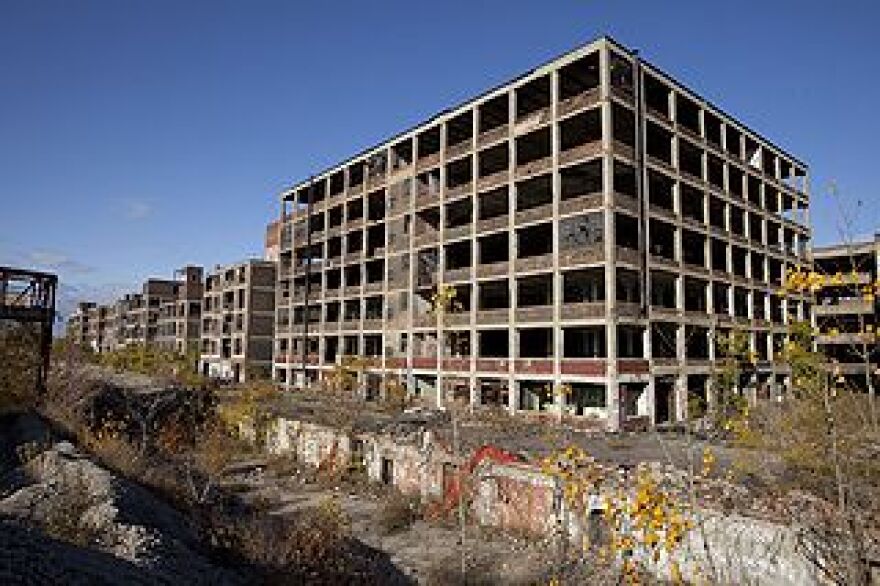Two recent interviews by the Innovation Trail served as reminders of how often the ‘innovation conversation’ is framed in terms of technology and economics, rather than in terms of genuine public policy and dialogue.
They were both broadcast on WXXI's Connections with Evan Dawson Innovation Friday.
Rich Harwood is founder and President of the non-profit Harwood Institute for Public Innovation. Innovation Trail spoke with him in late February about his proposal to train a group of 5,000 public innovators.
The entire interview can be heard here:
“Well, you know a lot of times when we think of innovation we think of new gadgets and all sorts of new toys and technologies. I actually think of it in a different way, which is can we break out of the assumptions and the rigid ways that we’ve gone about trying to work in communities, which have too often produced a kind of toxic public discourse, have created distrust and division in our communities and can we focus more on what people’s aspirations are in our community.
"Developing strategies that literally fit the local context of the community and to innovate in ways that we’re actually developing the capacity and strengths of the community as we’re doing our work, which means building new networks for learning and innovation, building leaders who want to lead in different ways, building organizations that are working for the common good and not just their own agenda. And when we find people that are willing to do these things, they can produce results that actually move communities forward.”
"...can we break out of the assumptions and the rigid ways that we've used trying to work in communities?"
Harwood outlined the broader context for the initiative and quotes examples, like work the institute is doing in the community of Battle Creek, Michigan.
“The number of innovators we’re working with there are people who are working with the local United Way, people who are working with their local Community Foundation who have come together and decided to figure how kids are going to transition from Middle School to High School, so they’ve (formed a new coalition of community groups’ to rally around kids and to create new programs and efforts that will support.
"One of the main movers in Battle Creek that we’ve been working with is a woman called Talia Chapman and, as she went through our work and learned how to be a public innovator, she said we need to pull together in Battle Creek to have a different kind of conversation about where we want to go to, and she just started by pulling small groups and leadership people together. She was a real-estate broker she’d never done this kind of work before, and now she heads up Project 20/20 which is one of the main groups rallying around this transition.
"One of the things that we need early when communities are trying to create a new path is we need to innovate, we need to try different kinds of things, we need to see what works and what doesn’t. we need to be willing to learn from our failures. That’s what’s happening in Detroit right now, the kinds of of things that are bubbling up in Detroit right now, the kinds of small startups that are starting, or the civic activities, people are deciding that the city can’t take care of parks so people banding together to take care of parks. These things nobody could have predicted by doing a research study. They sprung up over time and they’re sending signals about what might work here. What are people willing to do, how can we bring people together in a different kind of way? And all of those things I am mentioning are beneath politics in a sense.”
And speaking of Detroit, the former Motor City is front and center in this new study.
In a related interview Lavea Brachman, Executive Director and a co-founder of the Greater Ohio Policy Center, and co-author of the study ‘Regenerating America’s Legacy Cities’ with Allan Malach for the Lincoln Institute of Land Policy, picked up on what can happen when cities lose some traditional cornerstone public services.
“As cities lose extensive populations, public sector capacity gets lost to address these problems, but that’s not impossible to turn around, and that kind of vision is critical. We talk a lot in that report about strategic incrementalism, which is forging a shared vision about a city’s future as a starting point for change. And it is about coming to some common understanding about where to target resources.
"And it is about being incremental and strategic. You have to make change, starting perhaps with downtowns as the source and then looking at these emerging neighborhoods.
'...public policy is a double-edged sword...'
"But public policy is a double-edged sword. So, for instance, if you’re dealing with a housing crisis, which many of these cities are, it’s more likely you’ll be able to shorten or expedite the foreclosure so these properties get back on the market or make some changes on how banks handle abandonment, and while these seem like small changes they are the kinds of changes that can really make a difference in a neighborhood. So we may not be able to see huge subsidies or public investments going to new infrastructure quite yet.”
The full interview with Lavea Brachman can be heard below, along with the document we're talking about.
Regenerating Americas Legacy Cities



